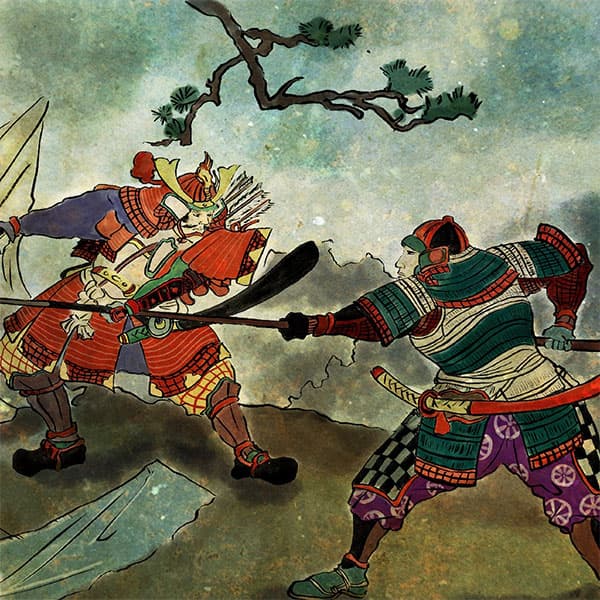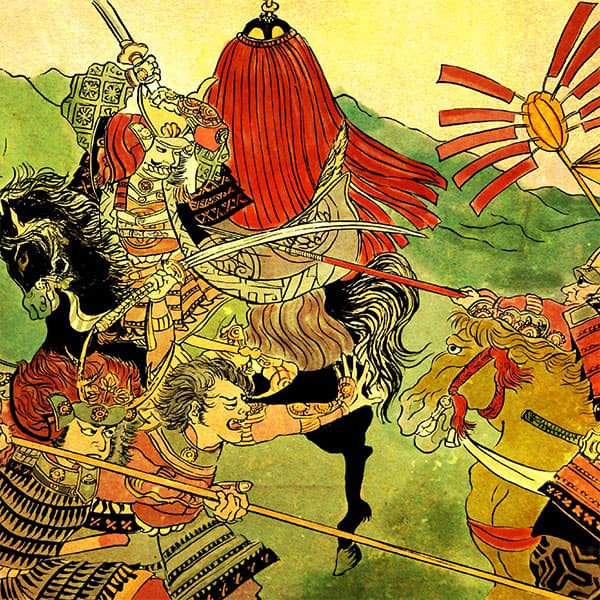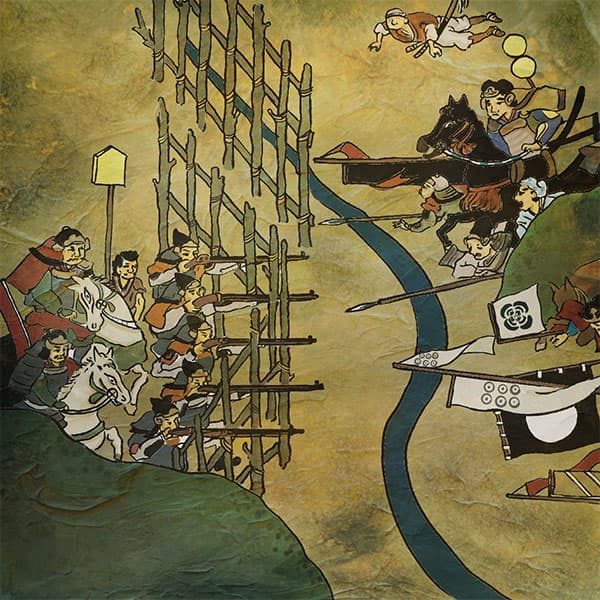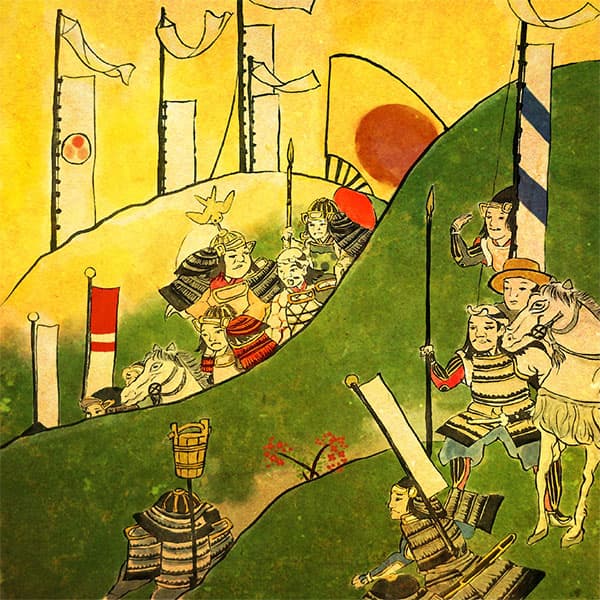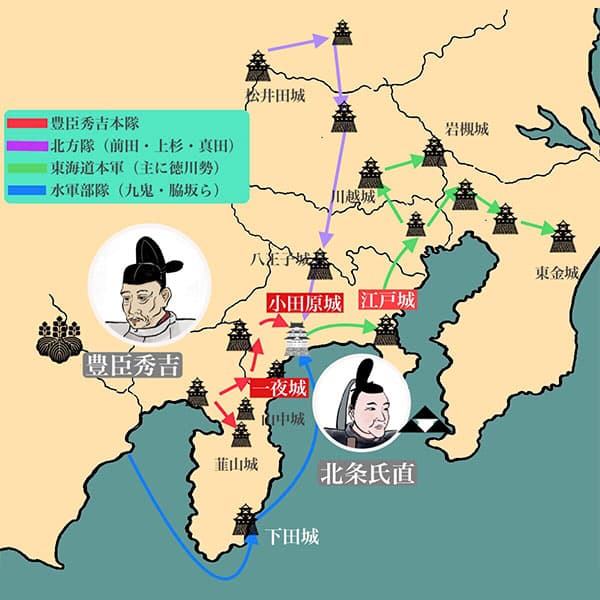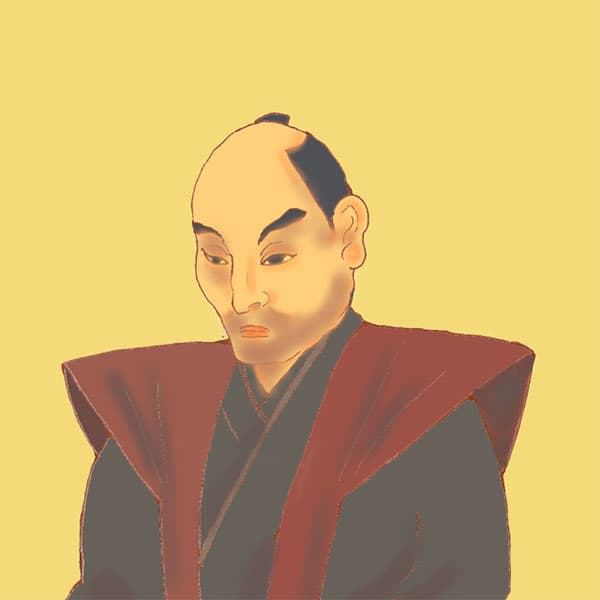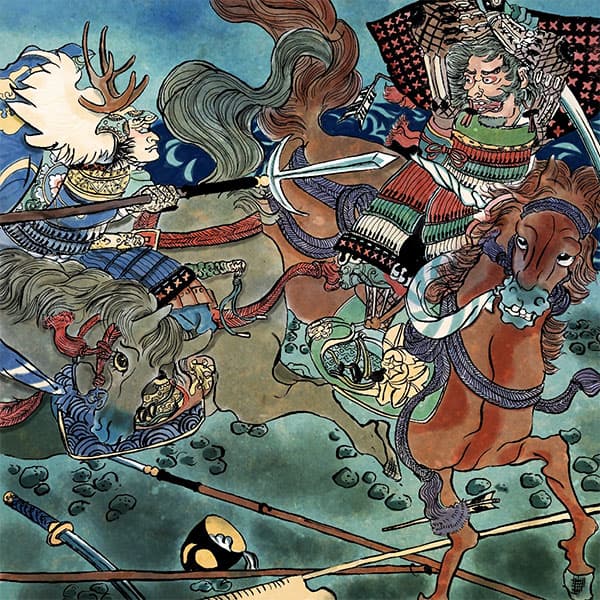Kazumasa Ishikawa (2/2)From a loyal subject to a traitor
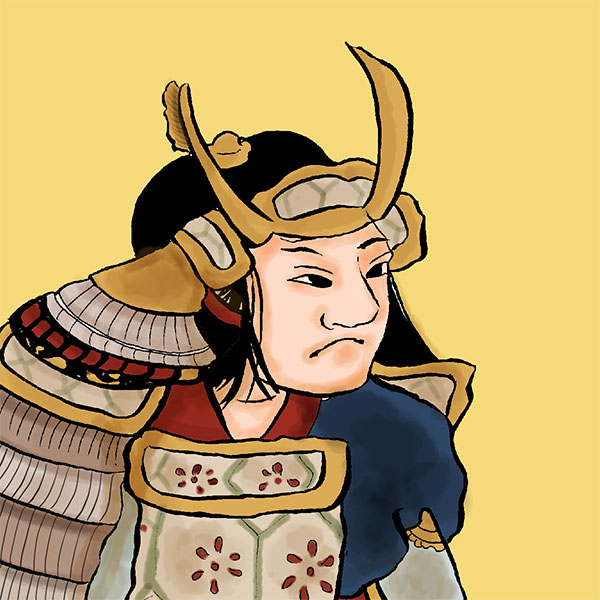
Kazumasa Ishikawa
- Article category
- biography
- name
- Kazumasa Ishikawa (1534-1609)
- place of birth
- Aichi prefecture
- Related castles

Matsumoto Castle
National treasure tower
- related incident
However, three years after the transfer, in 1593, Kazumasa Ishikawa passed away at the age of 61.
There are various theories about where and when he died, but his funeral was held at Shichijo Kawahara in Kyoto.
While active as a loyal vassal of the Tokugawa family, Kazumasa Ishikawa passed away to Toyotomi Hideyoshi, and his estate was divided and inherited by his three children.
Now, what happened to the Ishikawa family after Kazumasa Ishikawa passed away?
Kazumasa's eldest son, Yasunaga Ishikawa, took the lead in governing Matsumoto Castle.
The Battle of Sekigahara took place in 1600, after the death of Toyotomi Hideyoshi. After the war, the Ishikawa family joined the Tokugawa family, the eastern army, and their territory was relieved.
However, in the 18th year of Keicho (1613). The Ishikawa family was confiscated (confiscated) in connection with the Okubo Nagayasu Incident. Okubo Nagayasu was a retainer of the Takeda clan, but was discovered by Tokugawa Ieyasu and exerted his power in developing mines and managing land.
As a result of this selection, Nagayasu Okuba became greatly involved in the administration of the early days of the Edo Shogunate, but behind the scenes it is said that he repeatedly embezzled people and amassed personal wealth. Immediately after Okubo Nagayasu's death, the shogunate investigated this illegal wealth accumulation and it was exposed.
Since the Ishikawa family was related by marriage to Nagayasu Okubo, Yasunaga Ishikawa and his family were exiled as they were suspected of being involved.
As a result, Kazumasa Ishikawa's lineage of the Ishikawa family declined, and Matsumoto Castle was ruled by several feudal lords before being ruled by the Toda family until the Meiji period.
Matsumoto Castle
Matsumoto Castle, formerly known as Fukashi Castle, is located in Matsumoto City, Nagano Prefecture.
It is a typical Heijo castle, with the Honmaru, Ninomaru, and Sannomaru all shaped into squares. Among Japanese castles, this castle tower was built before the Edo period and remains to this day. It is one of the 12 existing castle towers, and the only flat castle among the 12 castle towers. The castle ruins are designated as a national historic site, and the castle tower is designated as a national treasure.
It is said to have its origins in the Eisei era (1504-1520) in the early Muromachi period, when it was built by the Shimauchi clan during the time of the Ogasawara clan, the governors of Shinano Province (present-day Nagano Prefecture), and was named Fukashi Castle.
In the Tenbun era (1532-1555), the Takeda family of Kai (present-day Yamanashi Prefecture) began the invasion of Shinano Province, and in the Tenbun era (1550), the Ogasawara clan was expelled. From then on, the Takeda family ruled the northern part of Shinano Province, centering on Fukashi Castle (Matsumoto Castle). Fukashi Castle (Matsumoto Castle) became a strategic point in Shinshu.
In 1582, with the fall of the Takeda family, Fukashi Castle was handed over to the Oda family, but with the Honnoji Incident and the Tensho-Igo War, control was transferred to the Tokugawa family. At this time, Sadayoshi Ogasawara, who was under the control of the Tokugawa family, entered the former territory and changed the name of Fukashi to Matsumoto, and after that, the castle also came to be called Matsumoto Castle.
In 1590, Toyotomi Hideyoshi's conquest of Odawara led to the transfer of the Tokugawa clan to Kanto, and the then lord of Matsumoto Castle, Hidemasa Ogasawara, also moved to Shimousa Koga. Kazumasa Ishikawa ruled Matsumoto Castle on behalf of the Ogasawara family.
From then on, the Ishikawa family continued to rule until the Ishikawa family was amended in connection with the Okubo Nagayasu Incident in 1613.
Kazumasa Ishikawa maintained the castle tower and castle town, including the castle tower, and the prototype of the current Matsumoto Castle was completed. When Kazumasa died while fighting in Korea, his son Yasunaga succeeded him and constructed the castle. Immediately after Kazumasa Ishikawa's death, the castle was constructed on a much larger scale than in Kazumasa Ishikawa's time, and a castle tower was built, making it a large-scale castle.On the other hand, however, the construction work was extremely harsh, and trees and bamboo in the mountain forests were cut down extensively. However, even when private houses were demolished, there was no compensation, and it was said that it was a series of coercive measures.
This harsh construction of the castle is said to be one of the reasons for the extinction of the Ishikawa family.
Major renovation of the castle tower
After the Ishikawa family became kaieki (discontinuation of the family), the lords of Matsumoto Castle changed around the Fudai family, and the Meiji era began when the Toda family ruled.
However, as the Meiji era began, Matsumoto Castle faced many hardships.
In the Meiji period, Matsumoto Castle's Ninomaru and Sannomaru were demolished and prefectural and police facilities were built.
Furthermore, in 1872, the castle tower was put up for auction. It was said that the castle tower of Matsumoto Castle would be sold off at auction and turned into vacant land. When the local people heard this story, they were greatly saddened, and a group of volunteers led by Ryozo Ichikawa, who had built a local newspaper company, formed a group to buy it back.
However, in 1897, the castle tower began to lean. This is believed to be due to the deterioration of the 16 wooden pillars that serve as the foundation of the building, which was built on soft ground. At this time, a preservation society was formed by Yuya Kobayashi (later one of the founders of Tokyo University of Science), who was serving as a junior high school principal, and a preservation society was formed from 1903 (Meiji 36) to 1913 (Taisho 2). Until then, the ``Meiji era major renovation'' was carried out.
Matsumoto Castle, which was rebuilt in this way, was designated as a national historic site in 1930, and remains as such to this day.
Festivals and events at Matsumoto Castle
- Autumn “National Treasure Matsumoto Castle Castle Festival”
- The National Treasure Matsumoto Castle Festival is held at Matsumoto Castle from October to November, approximately one month before and after November 3rd. During the ``Castle Festival,'' various events will be held, including a joint tea party, a doll decoration exhibition, and a chrysanthemum exhibition. One of the events is the ``Old Artillery Demonstration'', which is a demonstration of matchlock guns, and the ``Boys and Girls Warrior Parade'', a parade of warriors.
- National Treasure Matsumoto Castle “Ancient Artillery Demonstration” “Matsumoto Domain Ancient Artillery Demonstration”
- During the castle festival held in autumn, there is an ``ancient artillery demonstration'' in which warriors wearing armor and helmets demonstrate how to fire matchlock guns at the Ninomaru Palace ruins of Matsumoto Castle.
In 1988, the late Mr. Michishige Akabane, a native of Matsumoto City, donated materials related to matchlock guns and 141 matchlock guns to Matsumoto City, and the exhibits began as the ``Matsumoto Castle Gun Store'' inside Matsumoto Castle.
The ``Matsumoto Castle Gun Store Akabane Collection Association'' was established to display the materials within Matsumoto Castle. The ``Matsumoto Castle Gun Corps'' was created in 1990 as part of the activities of the ``Matsumoto Castle Gun Store Akabane Collection Association,'' and began to practice monthly with the aim of passing down the artillery style of the Matsumoto clan's imperial family. This Matsumoto Castle Artillery Corps became a pioneer of the nation's gun corps that would later be formed.
The Matsumoto Castle Artillery Corps holds matchlock demonstrations in the fall and spring at Matsumoto Castle's Honmaru Garden in the form of ``Ancient Gunnery Demonstration'' based on the philosophy that ``we want to use the firing of matchlock guns as a living historical teaching material for children.'' Matsumoto Clan Ancient Artillery Demonstration.”
The ``Ancient Gunnery Demonstration'', which is held in the fall, begins first and is now held at the ruins of Matsumoto Castle's Ninomaru Palace.
Since 2009, the ``Matsumoto Han Traditional Artillery Demonstration'' has been held in the spring. A matchlock gun demonstration by the Matsumoto Castle Gun Corps will be held at the National Treasure Matsumoto Castle Honmaru Garden. - National Treasure Matsumoto Castle “Boys and Girls Warrior Parade”
- The ``Boys and Girls Warrior Parade'' began to be held as an event to look back on the history of Matsumoto City and Matsumoto Castle and pray for peace and prosperity. A warrior procession of 80 general public and 120 elementary school students, including girls dressed as princesses, samurai in armor and helmets, and little ninjas bravely march out of Matsumoto Castle, a national treasure, and decorate Matsumoto with a landscape that looks like a picture scroll from the era.
- Ogasawara peonies
- This is a story about when Takeda Shingen of Kai invaded Shinano Province. The Ogasawara family was attacked and had to retreat from this area. At this time, the head of the family, Nagatoki Ogasawara, feared that his cherished white peonies would be trampled over by enemies, so he entrusted them to the chief priest of a temple connected to the Ogasawara clan. The temple family has continued to protect it as the ``lord's white peonies'' for generations.
Furthermore, around the beginning of the Showa era, the Dan family who had been protecting this peony talked about the white peony to the head of the Ogasawara family. When the head of the family heard this, he was moved, and the white peonies were transplanted to Matsumoto Castle (Fukashi Castle), where they continue to bloom and entertain people today.
Reread Kazumasa Ishikawa's article
- related incident

- WriterTomoyo Hazuki(Writer)I have loved history and geography since my student days, and have enjoyed visiting historical sites, temples and shrines, and researching ancient documents. He is especially strong in medieval Japanese history and European history in world history, and has read a wide range of things, including primary sources and historical entertainment novels. There are so many favorite military commanders and castles that I can't name them, but I especially like Hisashi Matsunaga and Mitsuhide Akechi, and when it comes to castles, I like Hikone Castle and Fushimi Castle. Once you start talking about the lives of warlords and the history of castles, there's a side of you that can't stop talking about them.


